I prefer to fish via drift boat, but on this late fall day, I’m fishing from a jet boat. Well, sort of. We’re cheating the system in the name of science and the fishing has never been better.
My waded and booted body is braced against a rail system decorating the front of the boat. The top rail hits me well above the waist. This is a good thing. A higher rail holds me in better. There’s electricity in the water and the last thing I want to do is go overboard.
I swing a long-handled net over the metal frame and dip. The force of entry into swift water lifts my felted feet off the deck. Then the force doubles. Trout are filling my net. I need to lift it out of the water before I go in. My shoulders shake raising the waterlogged weight. I’m sure veins are popping on my forehead. I’m sweating. The crew is laughing. I’m not nearly as graceful as they are and they’re enjoying my freak show. My strained effort results in one delightfully huge brown and a sucker. The sucker is thrown back. The brown stays on board in a bucket of sedated water. The trout is measured and tagged before going back in the river.
“Everything ties back to this survey,” says Brett High, Idaho Department of Fish and Game fisheries biologist. “We work all year trying to help cutthroats and this is our one peek into how things are going each year. It shows how we’ve done. It’s like a report card at school.”
The report card includes the brown I netted. It’s one of more than 1,000 brown trout per mile in the South Fork of the Snake River, one of the oldest surveyed stretches of water in Idaho. Decades of data are behind the crew dropping electrically charged cords off the front of jet boats every fall. The shock delivered stuns fish just long enough for them to be scooped and counted.
The annual riverside riot is one of my favorite events. I’m usually shooting footage of everyone else, but on this particular trip I tucked my camera away in a waterproof pack and stepped up to the rails. I already knew what the process looked like. I wanted to know what it felt like. Based on my bruised ribs, I can tell you with certainty, it’s gut wrenching.

Stabbing a net into quick current with a jet boat adding extra horsepower is like racing down a trail on your mountain bike then intensely grip-squeezing your front brakes on the steep downslope. The instant grab sends your body over the bars. Easing the back brake would have been a better call, but now it’s too late. You’re inches from face in sloppy mud, or in this case, body in charged water. You pull back hard, wet boots touch flat metal. Somehow you’re still inside the rails. Now throw yourself into an upward swing bringing the stunned swimmers on board. And make it quick. Fish are floating belly up in every inch of water between boat and bank, including the easily overlooked center run.
“We always, on the South Fork, focus on the banks and it was interesting to see when we did a pass down the middle of a side channel how many fish were actually in the middle,” says Chris Jensen, fly fishing guide and volunteer netter. “Maybe I’ll have my clients fish out of the other side of the boat.”

Jensen is a new netter, but he’s got me on weight and height. He’s handling the work just fine. So are the experienced biologists who humored me with my one experimental heave. I give up my barely there rail stance and go back to doing my job behind the lens. I capture the counting process and it’s an impressive tally. Final 2016 stats are still pending so we’ll refer to 2015: 1,265 brown trout per mile, 1,052 rainbows and 1,724 Yellowstone cutthroat trout. All those fish passed through an assembly line of research in a hurry on their way back to the water.
“They come out of it in a couple of minutes,” High says. “Maybe a little bruised here and there. Maybe they’ll be a little bit wiser the next time we’re here in the fall.”
I’m also bruised and a bit wiser. Seeing so many fish in one day is like Christmas come early. The quantity and quality is astounding. It’s also humbling. I can no longer say my home water isn’t fishing well. It’s fishing just fine. It’s me who isn’t fishing well. The net full of fish that almost yanked me overboard is my vivid reminder every time I miss a take.




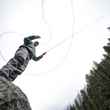

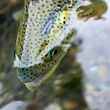




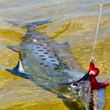
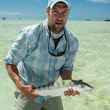








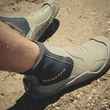
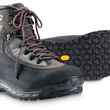



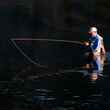
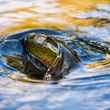


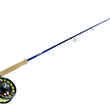

Comments